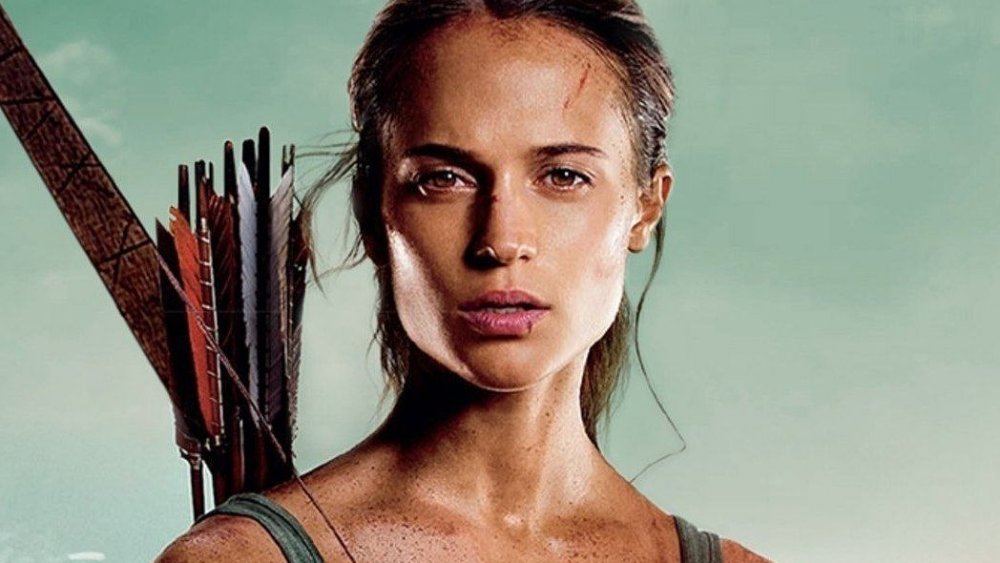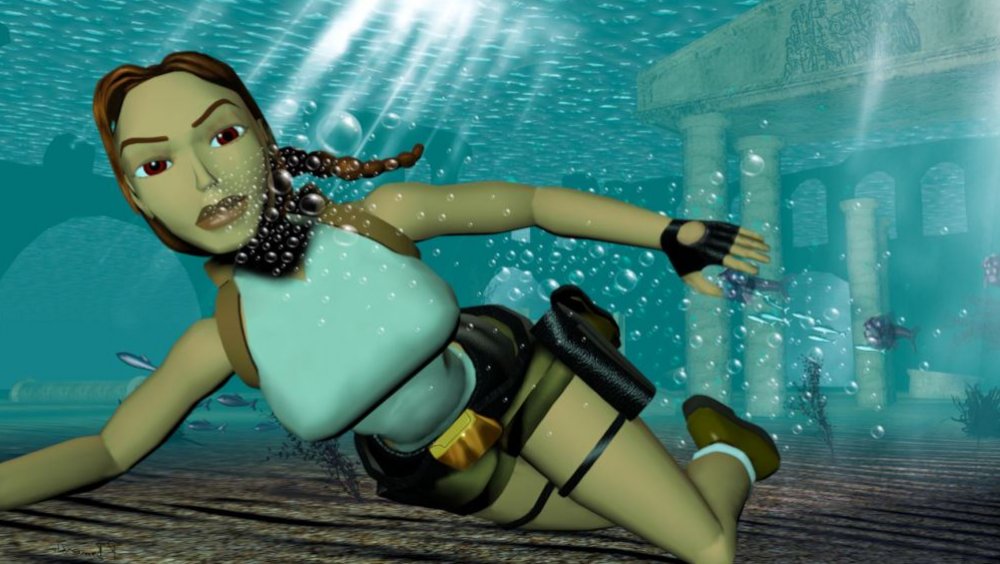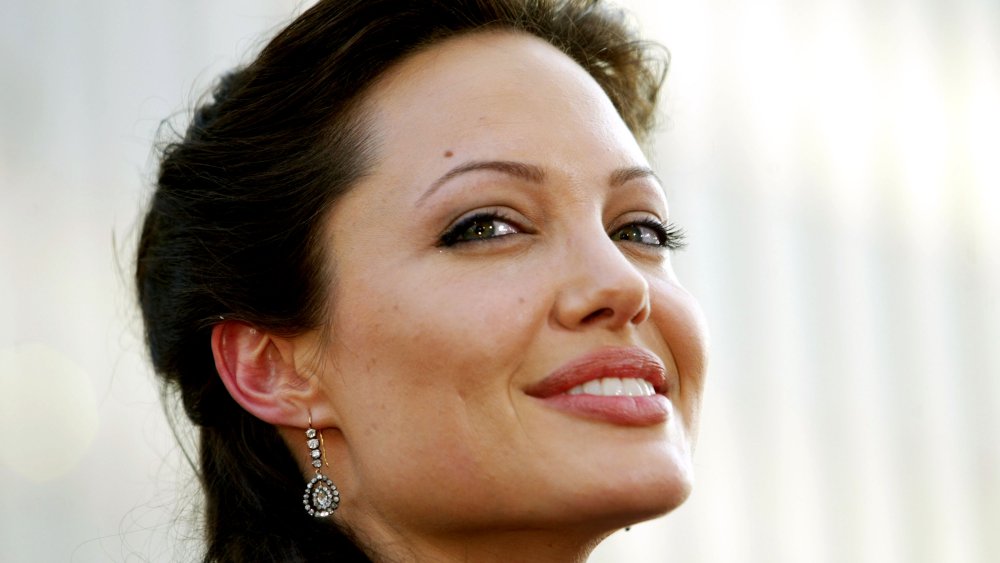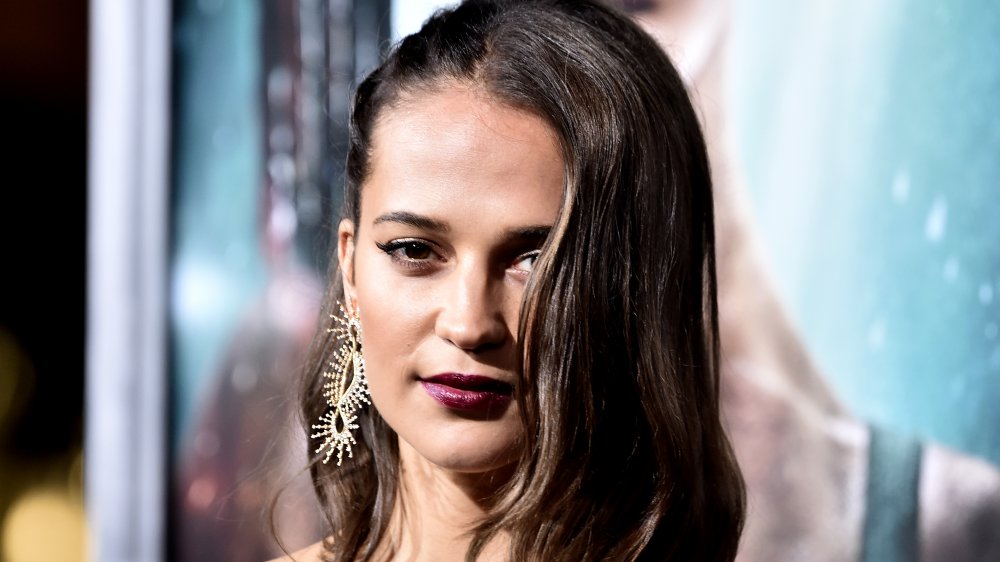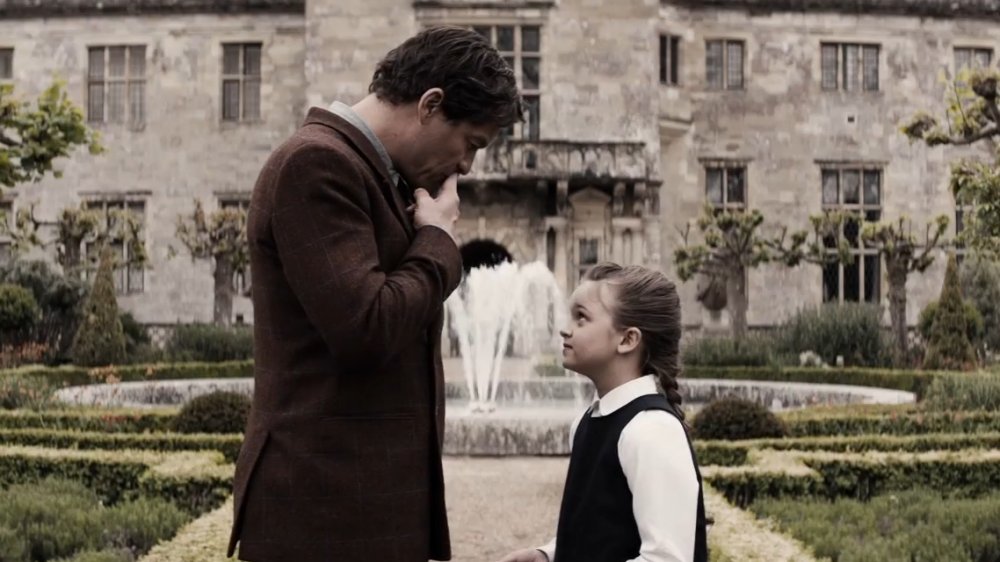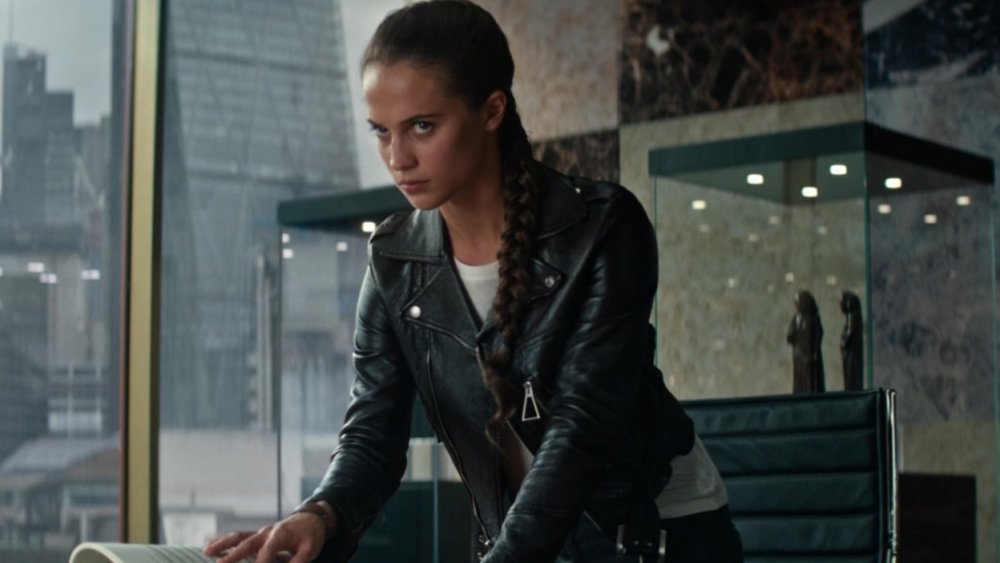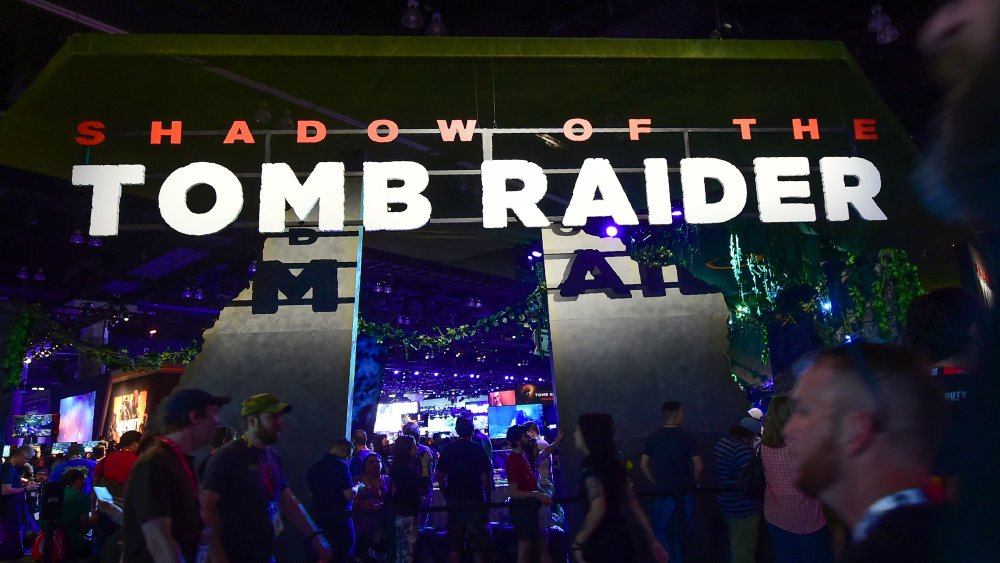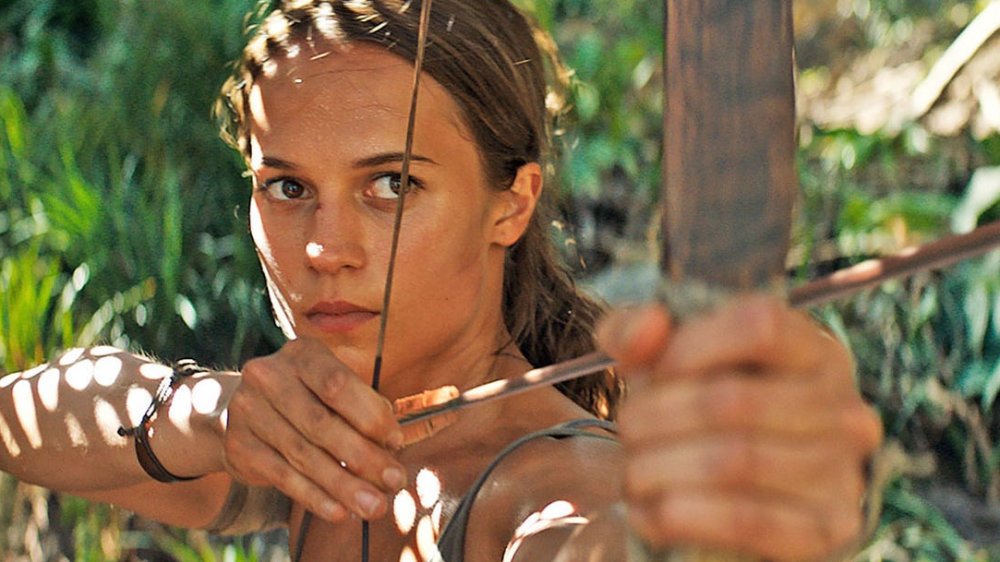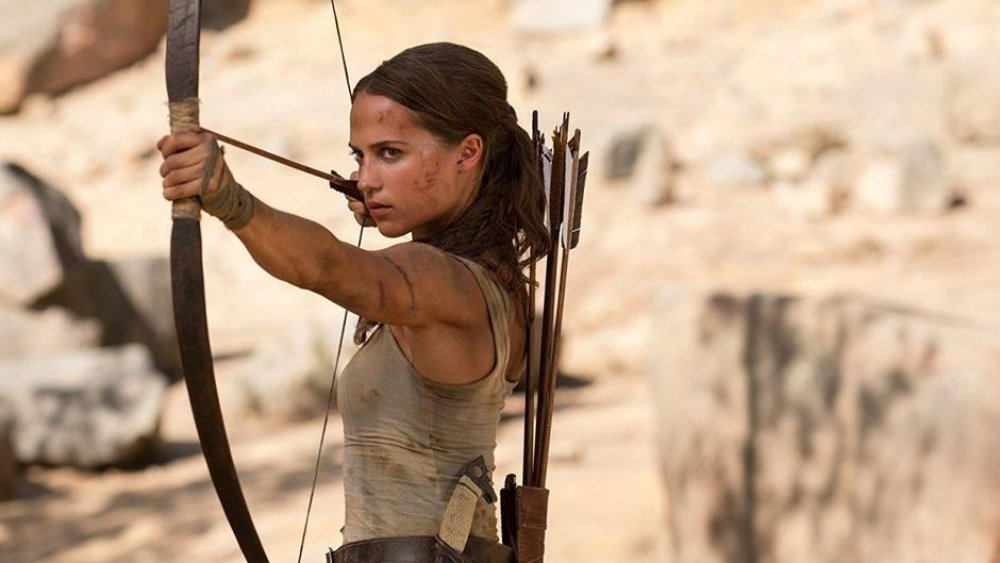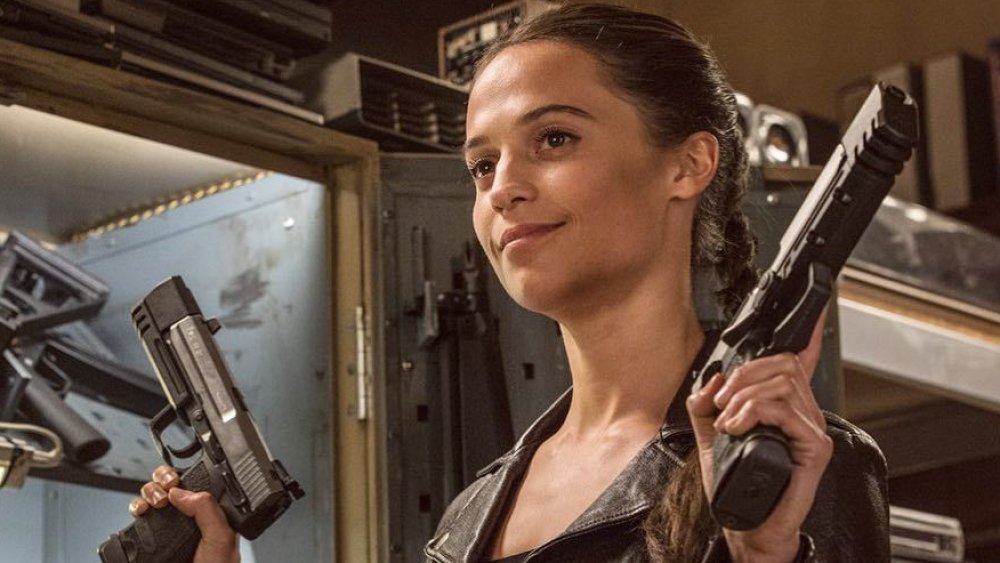Lara Croft's Entire Backstory Explained
Lara Croft was never meant to be a superstar.
The iconic video game character-turned-movie franchise linchpin began as little more than an Indiana Jones knock-off, with her creators seemingly stumbling backwards into one of the most successful games of all time. Her first iteration was essentially a digital clotheshorse for designers to hang a pixelated puzzle platformer on. No one could have imagined that she would grow to be one of the most beloved characters in the history of video games.
Croft's backstory has always reflected those ramshackle beginnings, changing frequently as the series grew and switching things up yet again once Lara made the death-defying leap from the console to the big screen. With a second helping of Alicia Vikander's Tomb Raider in the works, now is a great time to dive into the story of the franchise as it was, and the backstory of its titular gun-toting adventurer.
Lara Croft's real-world history
To have any idea about the tomb raider, you should probably know about Tomb Raider. The Core Design-produced video game was a surprise success, pulling the distributor Eidos out of near insolvency when it landed with a splash in 1996.
The game was designed by a six-person team that began work in 1994. The original character was a man, modeled loosely on Indiana Jones. Stories differ on how this rugged man became Lara Croft, with some sources saying that the studio's owner feared copyright litigation and designer Toby Gard saying he saw that gamers were starved for playable women.
"It became clear to me watching people play Virtua Fighter, which was kind of the first big 3D-character console game, that even though there were only two female characters in the lineup, in the almost every game I saw being played, someone was picking one of the two females," he said in a 2001 interview with the BBC.
Even after Core Design made the decision to make their protagonist a woman, Lara Croft was not yet built. Designers began their game with the South American heroine Laura Cruz at the center. Cruz was meant to be a hard-charging and militaristic character. The decision to make her British nobility — and the personality quirks that followed — came after they opted to move the character to the UK in a nod to their boss.
Star of game and screen
Tomb Raider was an unexpected smash when it hit consoles and PCs in '96. The initial title has sold seven million copies to date and successful sequels soon followed. The second and third installments were nearly as well received as the original, before a long fallow period in the 2000s.
During this downturn, Hollywood came calling. Hoping to capitalize on the success and name recognition of Lara Croft, they cast Angelina Jolie as the titular archaeologist and released two movies (Lara Croft: Tomb Raider and Lara Croft: Tomb Raider – The Cradle of Life). Eventually the movie series suffered the same fate of diminishing returns. Jolie and the movie studios moved on.
A resurgence in both the game and movie series began in 2013. That's when Square Enix offered a new look at one of the most-beloved characters in video game history, taking their cues from the antiquities seeker herself and knocking off some of the dust that had accumulated on the character.
2013's Tomb Raider allowed gamers to see Croft before she was an uber-confident asskicker and puzzle solver. A film followed in 2018 with Alicia Vikander taking over the title spot from Jolie, dropping viewers into Croft's uncertain youth.
The divergence of Lara Croft
Angelina Jolie's Lara Croft and Alicia Vikander's are about as far apart as two takes on the same character can get. They represent different eras in gaming and moviemaking, with Jolie's Lara representing the tail-end of blown out and glossy early aughts action and Vikander's take reflecting the movie-going public's love for more grounded takes on action stars, superheroes, and villains.
Jolie's version of Lara Croft is an established fighter and adventurer. She comes off as a mix of Jet Li's unflappable scrappers, Harrison Ford's grizzled travelers, and Sean Connery's suave killers. In short, she's not so much a person as an ideal. We meet this first cinematic take on Croft when she's already an established tomb raider, and she hardly struggles as she takes on a series of Illuminati agents looking to control time.
Vikander's iteration hews close to the 2013 reboot of the video game franchise. We meet Croft as a struggling student. While both Laras are the daughters of British aristocracy, the 2018 version of Lara is trying to make it on her own. She struggles as a bike courier, barely scraping by in London and is unwittingly pulled into a life of adventure. As Vikander's Lara is the only one who is still raiding, we'll focus on her from here on out.
Richard Croft, absent father
In nearly all versions of Tomb Raider, Lara's father is dead or missing. A life as an adventuring archaeologist came to the sort of end you would expect outside of the world of movies — in the 2018 version, Lord Richard Croft is missing and presumed dead. While Lara could easily claim her inheritance and live the life of a well-heeled British aristocrat, she refuses her father's estate. Claiming the fortune would be a tacit admission that her father is dead, and she still holds out hope that he may turn up alive and well.
Lara's hand is forced when she is arrested after being involved in a bicycle accident. An associate of her father's bails her out and makes it clear that she has to claim the estate or risk it all being sold off. While exploring her family home, she finds out that Lord Croft was deep in research on a deity that holds power over life and death. Despite finding a recorded message in which her father tries to warn her, Lara's curiosity gets the best of her and she picks up where he left off.
Tomb Raider introduces a less accomplished adventurer
Unlike the seasoned hero of the earlier games and movies, the new Lara is very green when it comes to adventuring. We see her learn the ropes in real time as she tries to unravel the mystery around her father's work. The team behind the 2018 film said that they wanted to make Lara a little more human and offer the audience an on-ramp into her life.
"We wanted to make her more relatable, which we maybe leaned into a little more than the Angelina Jolie movies of the past," screenwriter Geneva Robertson-Dworet said in an interview with the New York Times. "She's tough on the outside but in a bit over her head. We wanted to give her an internal journey, not just an outward adventure."
That need to train and learn was reflected in the real world, as Alicia Vikander had to take herself from an acclaimed actress known for dramas like Ex Machina and The Danish Girl to believable action star. Vikander said that she was inspired to stick to her regimen by a character like Croft, who can easily dispatch a large henchman or survive on a desert island.
"I'm very petite, and so I knew I would have to get stronger to be able to do all that," she told the New York Times. "I really look up to girls who have that physicality.
Alicia Vikander's Lara Croft has her roots in Square Enix's Tomb Raider reboot
Many of the 2018 film's decisions came straight from the brain trust at game developer Square Enix. When they retooled Tomb Raider for a 2013 reboot, they made Lara Croft a much more well-rounded person (and not in the way that drooling designers of the '90s might have). 2013's Tomb Raider showed Croft's work, following her as she grew into the role of a gun-slinging explorer.
"We wanted to show a character who was frightened and unsure, which was something that's not often shown in video games," game writer Rhianna Pratchett told the New York Times.
That reboot revitalized the franchise and the character's image writ large. Bringing her back into the spotlight in a more modern style kept Lara Croft from being an influential but dated creation. "If it wasn't for that reboot, Lara probably would have died a lonely, sexist death," Staffordshire University professor Esther MacCallum-Stewart explained in the same Times story. "People would have gone: Remember the dark days when we had that weird woman with the gigantic breasts?"
Tomb Raider moves away from gendered violence
Square Enix's 2013 Tomb Raider reboot wasn't without its problems. Audiences took it for granted that the original Lara Croft was a gifted fighter and marksman. In exploring her early life, questions about just how she got so skilled couldn't be brushed aside. To have Croft learn to fight, the reboot put Lara in a situation where the threat of sexual assault and death loomed. In a particularly disturbing early quest, she must learn to fight kidnappers and run away. If the player fails, Lara is caught and choked to death.
Rather than transplant that troubling story into the 2018 film, the screenwriters leaned on her status as the daughter of an aristocrat. She was a skilled fighter because she had been trained from a young age, even if she hadn't yet developed all of the abilities we associate with her classic game iteration.
Lara Croft's approach to killing
Lara Croft was influenced by a number of classic adventure heroes, most notably Indiana Jones. However, her British-ness is an essential part of her character, and she contains more than a bit of James Bond's cool, calculated attitude. Had early software constraints allowed it, we have no doubt that Croft would have always met every kill with a dry quip. She's used to killing when the need arises, and it's never worth breaking a sweat over.
2018's movie Croft — and the Croft of 2013's game reboot — has never killed anyone when we meet her, and it shows. She struggles over the times she has to take a life and is haunted by the idea of hurting others. Both the game and the movie were released after games like Bioshock and Spec Ops: The Line, which asked players to consider the consequences of their actions and why they were okay with killing when told they had to.
Lara Croft and the Hero's Journey
Fittingly for a film about archaeology and ancient history, 2018's Lara Croft puts the Hero's Journey front and center. We get to see her go from an everyday person plucked from obscurity to an archetypal hero in the mold of Joseph Campbell's thousand-faced monomyth.
Rather than the assured swagger we are used to from so many wisecracking action stars and established superheroes, we see Lara stumble and screw up on her way to becoming an accomplished vigilante and cavern cruiser. "The original version of Lara was very sassy, much more Marvel in tone," Tomb Raider screenwriter Geneva Robertson-Dworet told the New York Times, before noting that the 2018 film moved away from that take in the interest of relatability.
The blood, sweat, and tears that turned Croft from a bicycle courier to a hardened adventurer are fully on display in the movie. When Alicia Vikander's Lara grabs her recognizable dual pistols from a pawn shop in a post-credits scene, fully becoming the Tomb Raider we know, it feels well earned.
To quote the rebooted 2013 Lara herself, "The extraordinary is in what we do, not who we are."
